Lecture 4 - Synaptic & Neuromuscular Transmission
1/51
There's no tags or description
Looks like no tags are added yet.
Name | Mastery | Learn | Test | Matching | Spaced |
|---|
No study sessions yet.
52 Terms
3 main neuron structural types
- multipolar
- bipolar
- unipolar
multipolar
- 3 or more processes extending from cell body
- major type in CNS and efferenct PNS
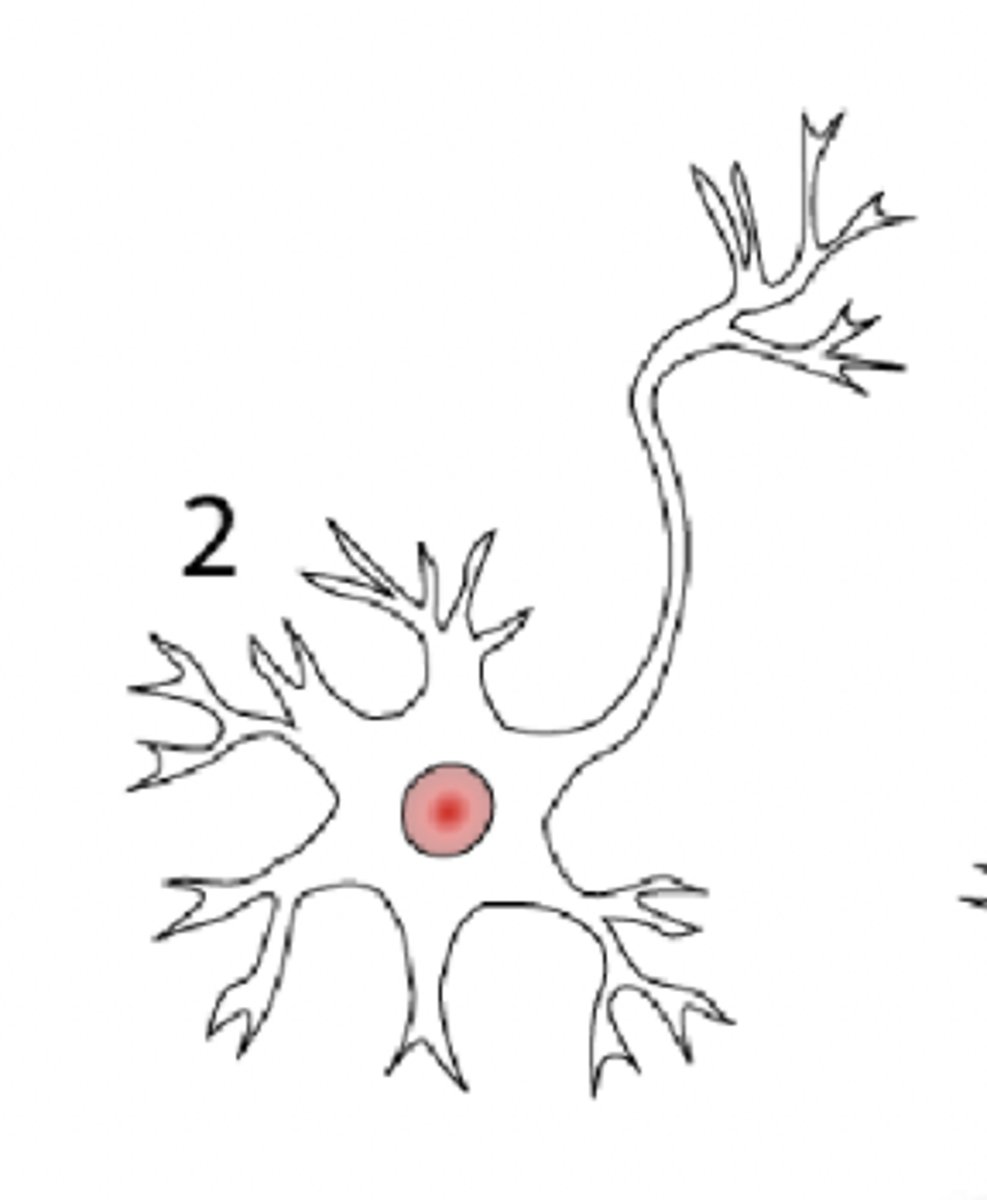
bipolar
- only 2 processes
- dendrite and axon
- retina and olfactory system
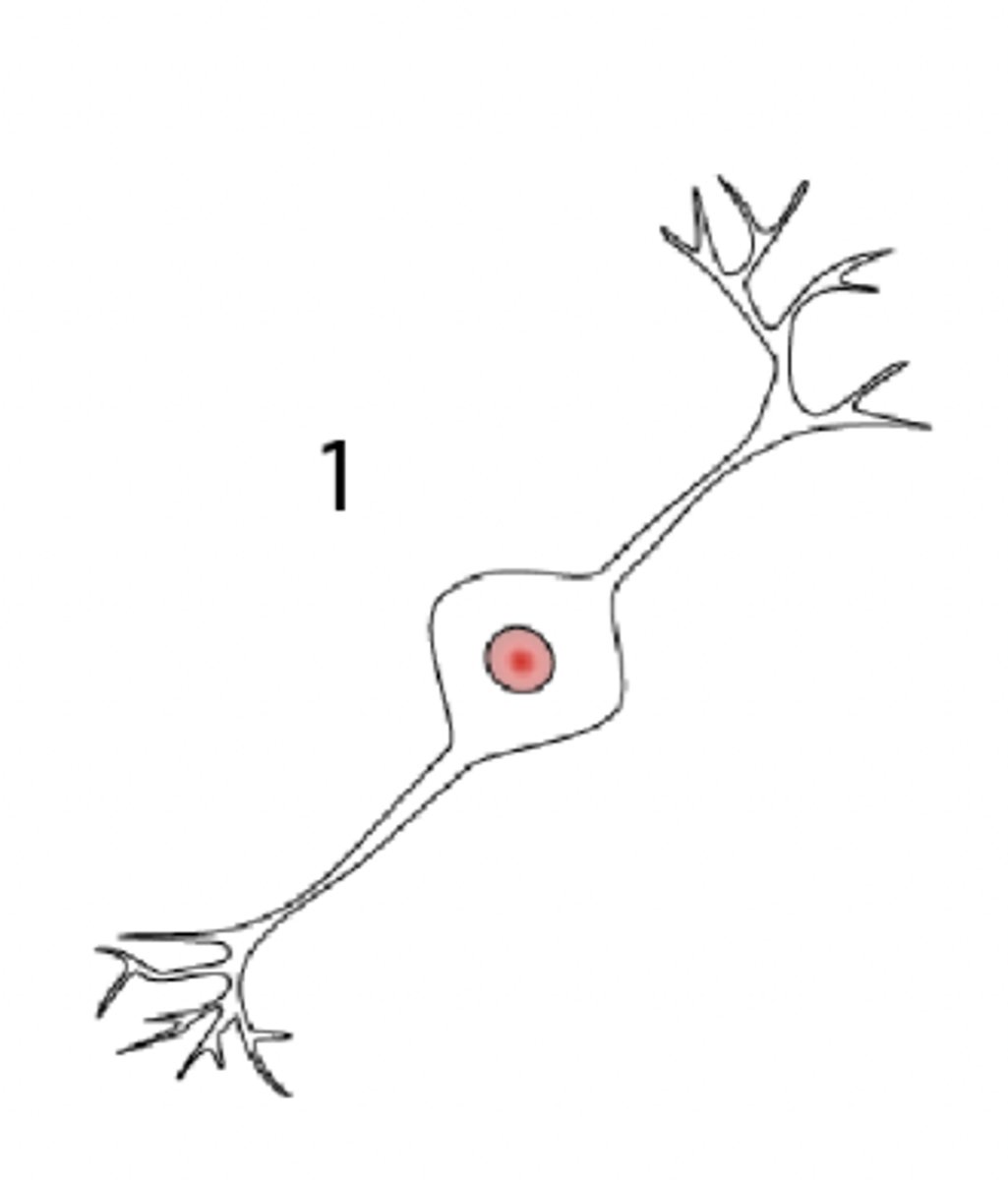
unipolar
- single short process from the cell body
- branches into 2 or more that extend in opposite directions
- one that is peripheral process associated with sensory perception
- primarily in afferent PNS
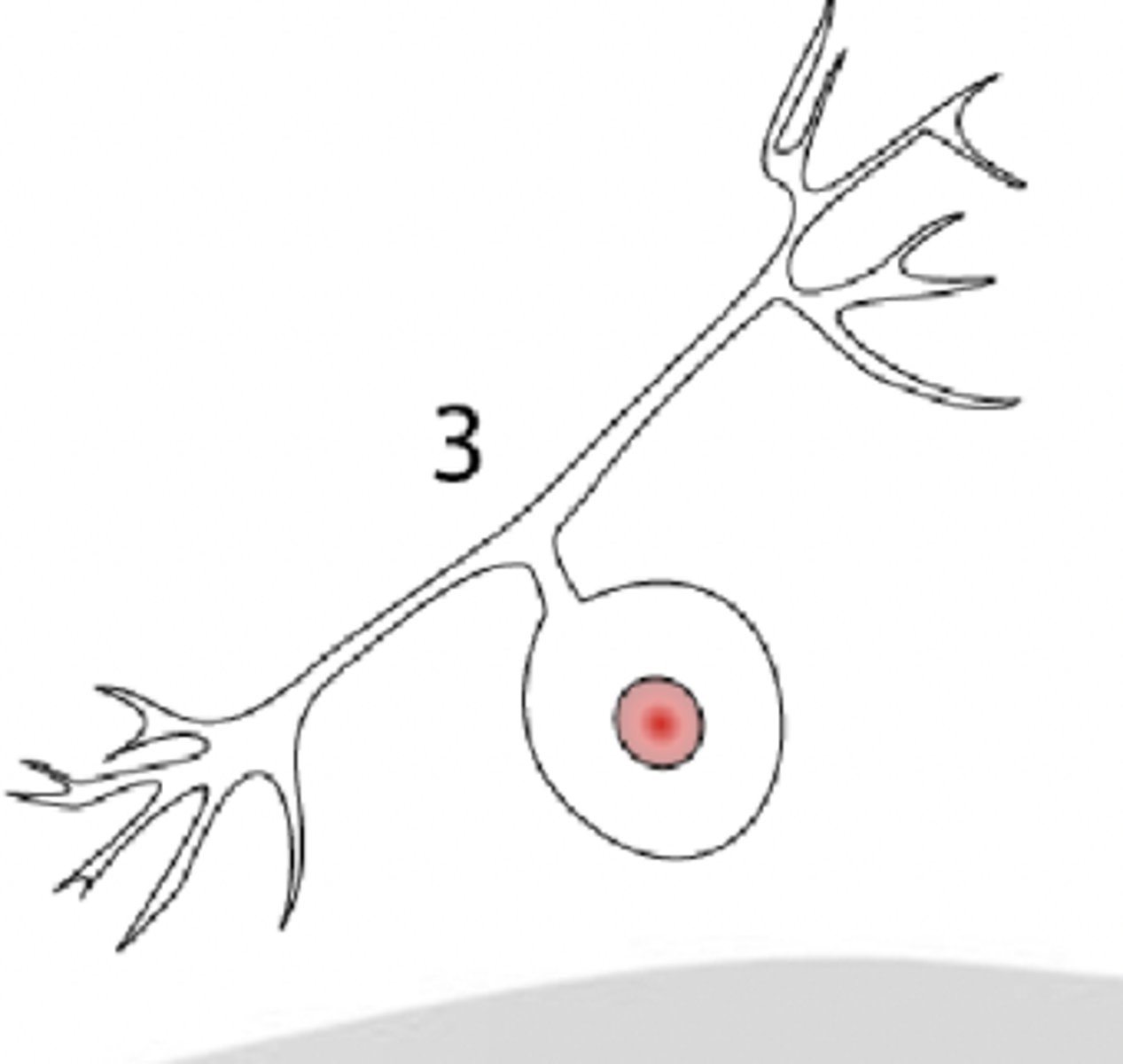
in an electrical synapse, the current flows between cells via ______ _________________
gap junctions
electrical synapse
- important for cardiovascular system
- very fast!
- stimulates cells simultaneously
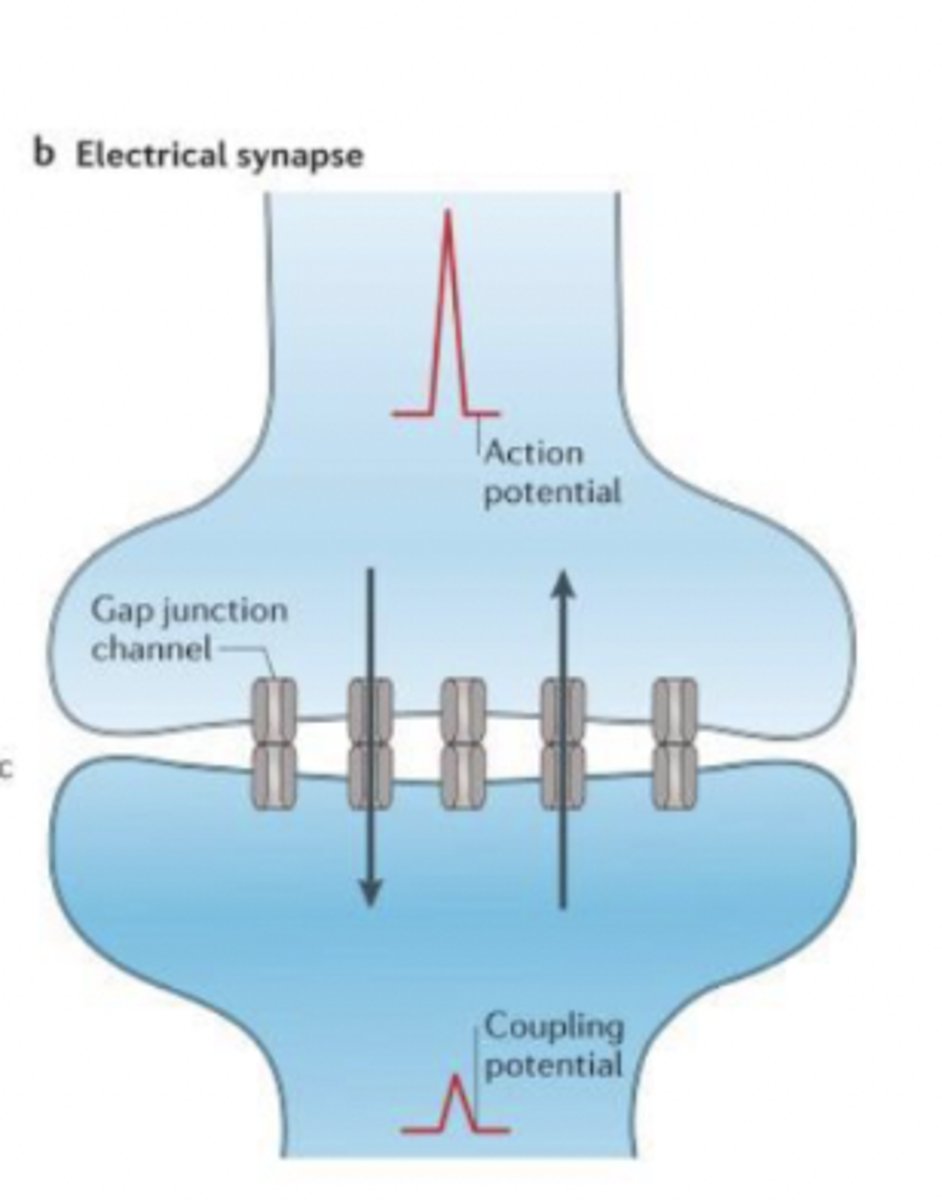
chemical synapse
- slower
- gap between presynaptic and postsynaptic cells = synaptic cleft
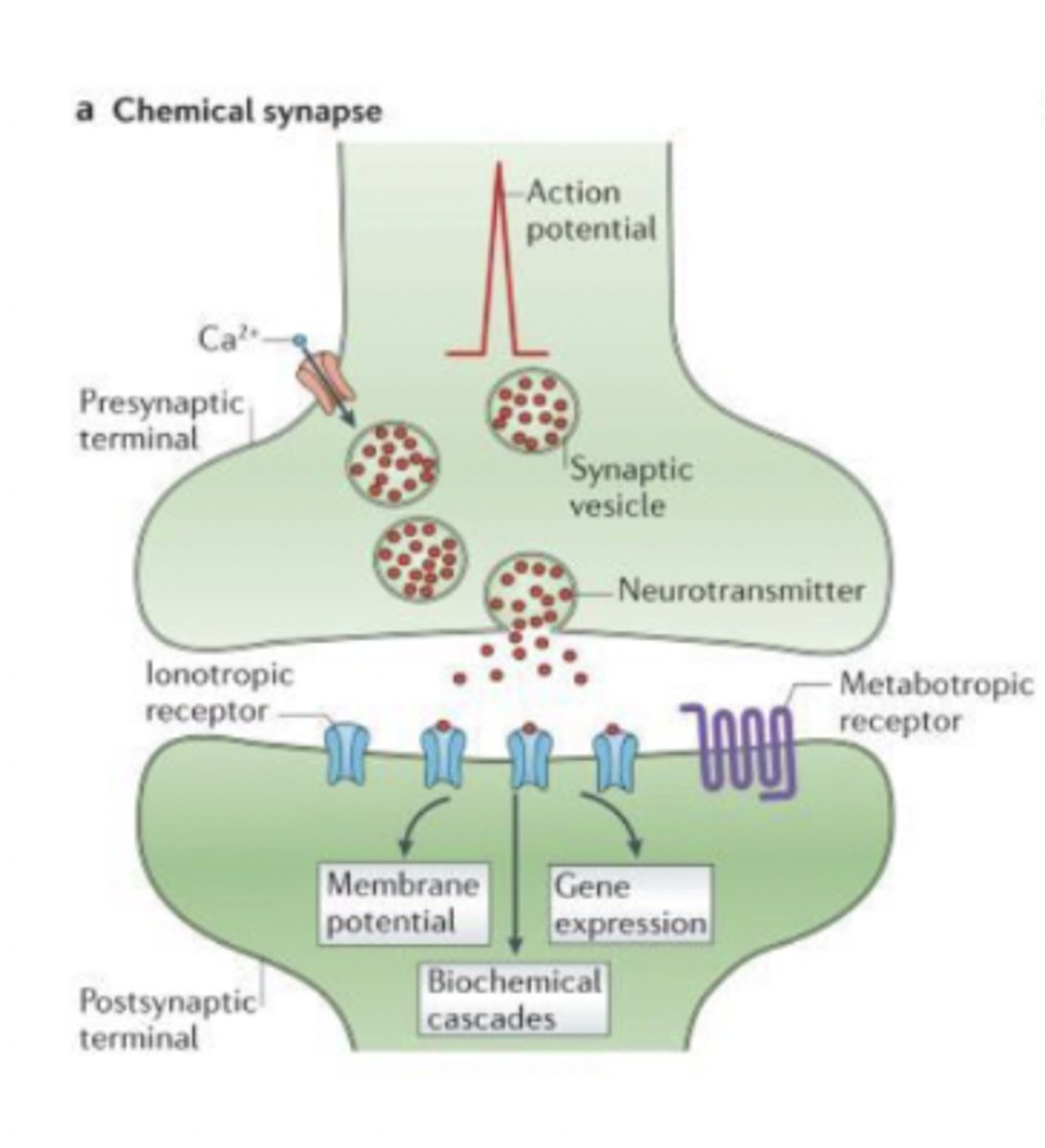
presynaptic & postsynaptic cells
At the synapse, the firing of an action potential in one neuron—the presynaptic, or sending, neuron—causes the transmission of a signal to another neuron—the postsynaptic, or receiving, neuron—making the postsynaptic neuron either more or less likely to fire its own action potential.
how does a chemical synapse happen?
1. AP in presynaptic cell causes voltage-gated Ca2+ channels to open
2. Ca2+ influx causes release of neurotransmitter from presynaptic terminal
3. neurotransmitter binds ligand gated Na+ channel on postsynaptic cell, leading to depolarization (can be excitatory or inhibitory)
how are neurons arranged?
in circuits where input cells synapse on output cells
- output cell may or may not fire an action potential depending on amount of excitation provided by the input cells
one-to-one synapses
neuromuscular junction
- single AP in motoneuron causes single AP in muscle fiber
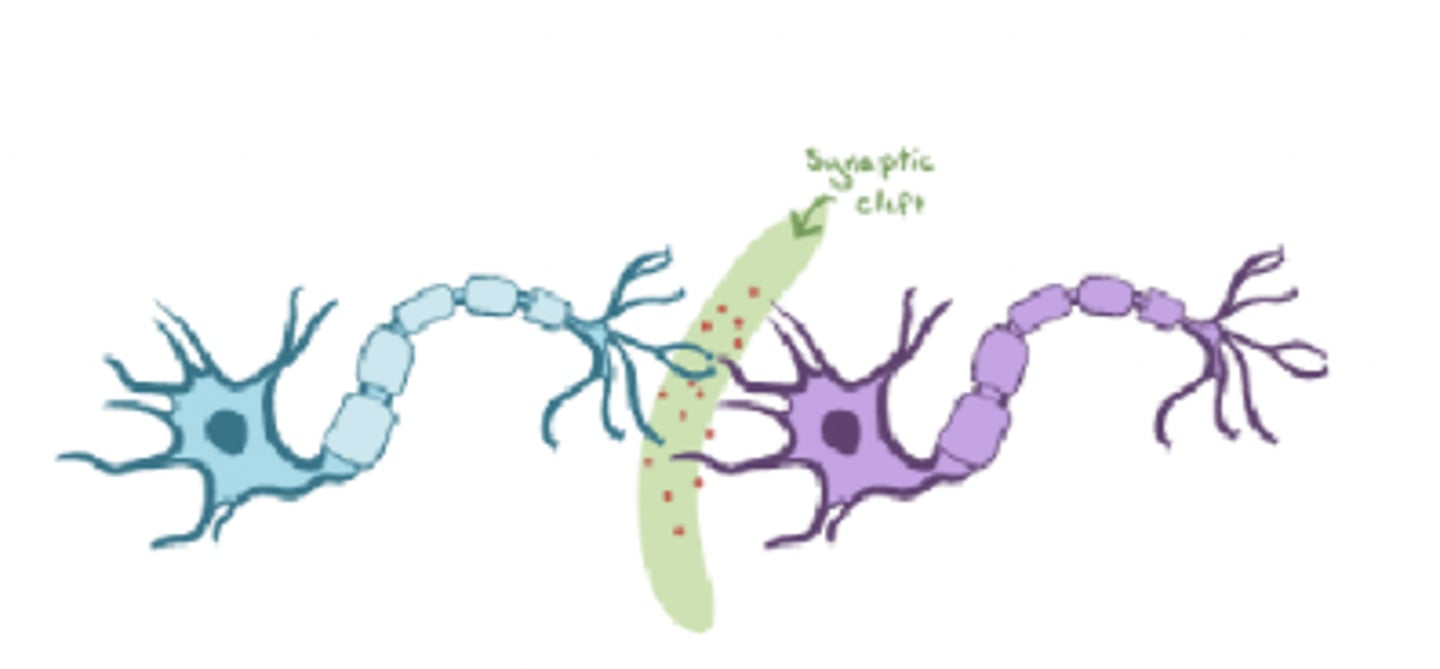
one-to-many synapses
- found in some motoneurons of spinal cord
- single AP in motoneurons causes many APs in postsynaptic cells
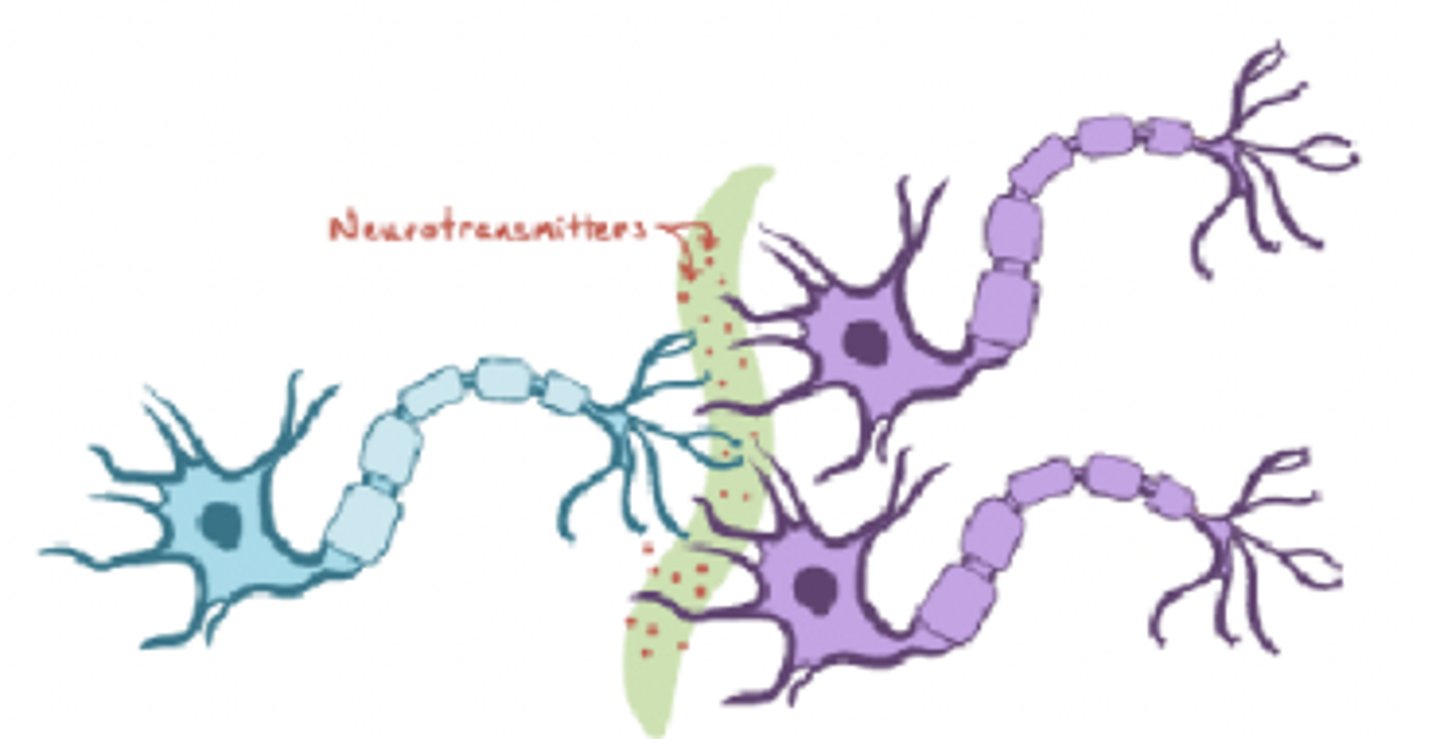
many-to-one synapses
- many presynaptic cells converge on a postsynaptic cell
- MOST COMMON!!
- information coming in from different neurons at a time, need convergence to happen
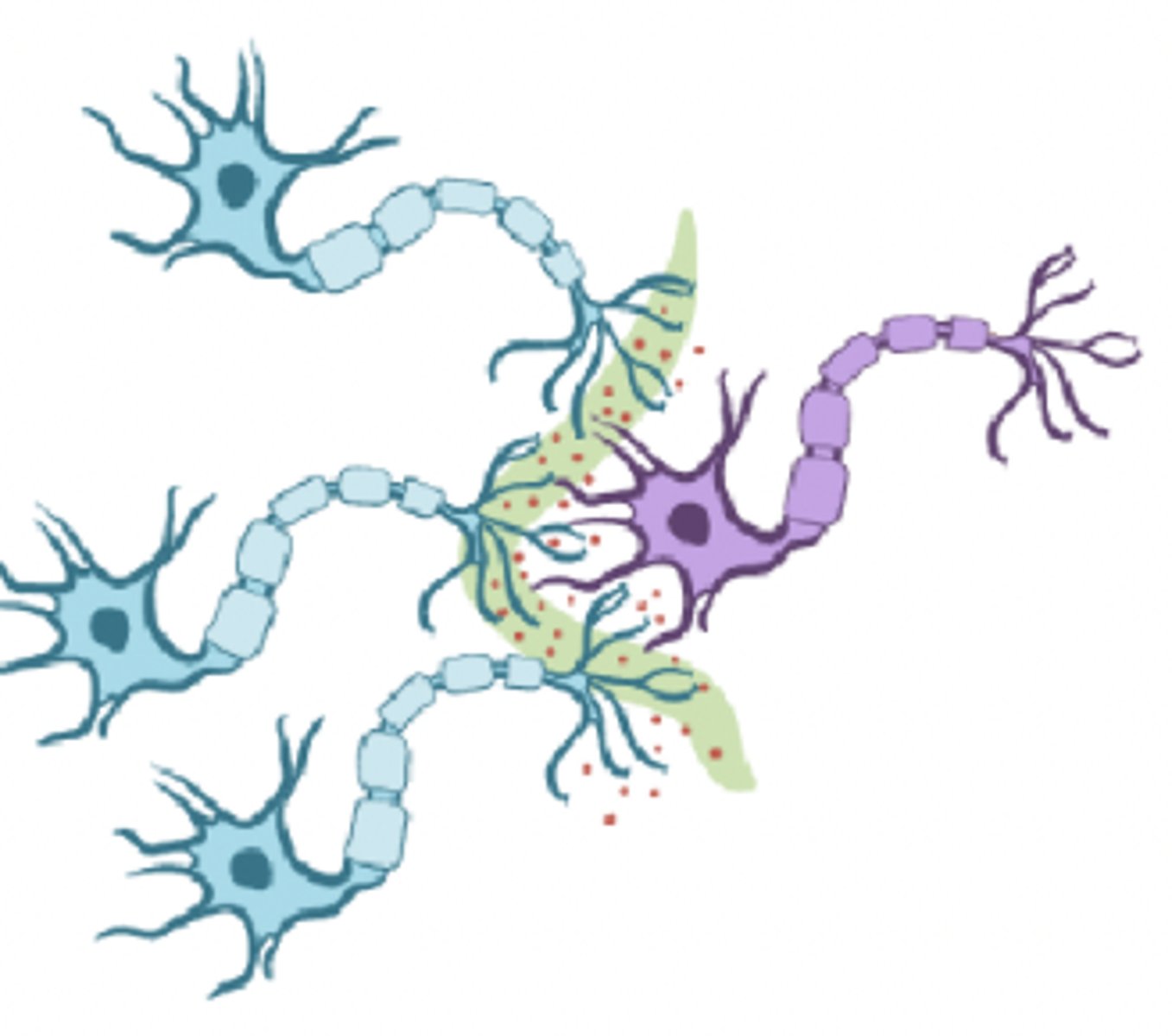
what is a synapse?
The places where neurons connect and communicate with each other
it is common to use a many-to-one arrangement = inputs are either ______________ or ________________
excitatory or inhibitory
excitatory postsynaptic potentials (EPSPs)
pre-synaptic neuron depolarizes post-synaptic neuron, brings neuron's membrane potential to threshold, opens Na & K channels
examples of EPSPs
Acetyl choline
norepinephrine
epinephrine
dopamine
glutamate
serotonin
inhibitory postsynaptic potentials (IPSPs)
pre-synaptic neuron hyperpolarizes post-synaptic neuron and membrane potential moves away from threshold, opens Cl- channels
examples of IPSPs
GABA
glycine
3 ways synaptic inputs are integrated
spatial summation
temporal summation
synaptic fatigue
spacial summation
two or more inputs arrive at postsynaptic cell simulataneously
what could happen in spacial summation?
- both of inputs could be excitatory = depolarization & able to reach threshold
- one could be excitatory and one could be inhibitory = cancels out
- both could be inhibitory; hyperpolarize and get further away from threshold
temporal summation
two inputs arrive at postsynaptic cell in rapid succession
what happens in temporal summation?
effects are additive!
- one and then other right away
- two are excitatory
- one excitatory and one inhibitory
synaptic fatigue
repeated stimulation yiels a smaller than expected response
- fatigue our nerves
what is a type of neurotransmitter receptor?
ionotropic receptor
ionotropic receptor
ligand-gated ion channels that usually open in response to binding of neurotransmitter
- once it binds, channels open up and now the ions can flow into the cell
where are ionotropic receptors usually located?
along dendrites or cell bodies and receive incoming information from other neurons
what are the effects on post-synaptic neuron?
1. may be excited due to Na influx causing depolarization
2. may be inhibited due to either K efflux or chloride influx causing hyperpolarization
3. Ca influx? - - - may or may not cause depolarization, Ca usually associated with 2nd messenger system
what is the primary excitatory neurotransmitter in the CNS?
glutamate
what are the 2 types of glutamate receptors?
AMPA & NMDA
AMPA
allows both sodium and potassium to cross the membrane but the gradient that drives sodium is the strongest one
net effect = depolarization
NMDA
depends on both glutamate binding obviously and VOLTAGE ~ when you are at or around resting potential there is magnesium ion that BLOCKS binding site and movement of other ions
- when glutamate binds & depolarizes, magnesium block is removed
what is the ONLY neurotransmitter used at neuromuscular junction and also used by autonomic nervous system (PSNS & SNS)
acetyl choline
PSNS & SNS
The parasympathetic nervous system (PNS) controls homeostasis and the body at rest and is responsible for the body's "rest and digest" function.
The sympathetic nervous system (SNS) controls the body's responses to a perceived threat and is responsible for the "fight or flight" response.
neurotransmitters that are INHIBITORY? (2)
GABA and glycine
glycine & GABA
both neurotransmitters are used in the CNS and both are chloride channels, allowing negative ions to come in and inhibit the AP
- binding of these causes inhibition since increase in Cl permeability is inhibitory
-GABA(a) receptor associated with chloride
metabotropic receptors
- located along dendrites or cell bodies, receive incoming information, slower than ionotropic receptors
true or false: metabotropic receptors are SLOWER than ionotropic receptors
true
metabotropic receptors can use what type of receptors?
G-protein-coupled receptors (GPCR)
- G-protein activated when neurotransmitter binds receptor
- G-protein alpha subunit binds GTP
______________________ may activate an ion channel (K+ channel) = direct G-protein gating
Beta y subunit
____________________ may activate enzymes that promote second messenger synthesis
Alpha subunit
Enzymes & Second Messengers
Enzymes
- Phospholipase C
- Adenylyl cyclase
Second Messengers
- IP3, CAMP, DAG
*any cyclase phosphorylates & sets off a cascade of events
neurotransmitters that activate G-protein coupled receptors
- Norepinephrine (NE)
- Glutamate (metabotropic receptor)
- GABA (GABA beta receptor)
Norepinephrine
uses alpha- or beta- adrenergic receptors
- beta-adrenergic GPCRs couple to a stimulatory G-protein subunit --> initiates cAMP second messenger system
- alpha-2 adrenergic receptors couple to an inhibitory G-protein and suppress the cAMP system
- alpha-1 adrenergic receptors couple to G-protein --> activates the phospholipase C second messenger system
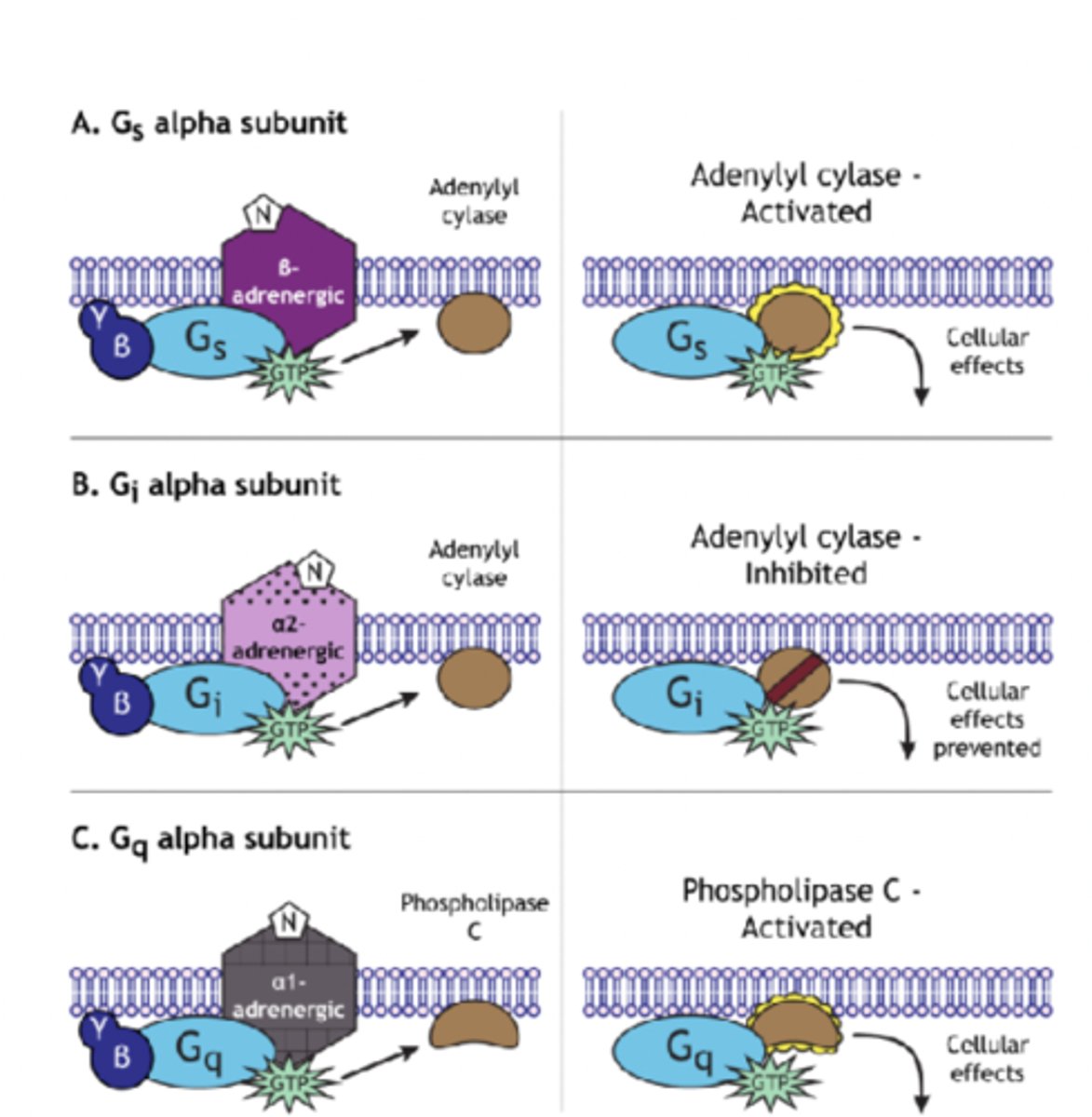
Glutamate (metabotropic receptor)
- acts on post-synaptic sites in CNS
- modulates cell excitability and synaptic transmission via second messenger pathways
3 groups of receptors for glutamate
group 1:
- increase neuron excitability
- activate phospholipase C pathway
groups 2 & 3
- suppress neuron excitability
- inhibit the adenylyl cyclase pathway
GABA (GABAb receptor
- found in CNS and autonomic division of peripheral nervous system
- GABA acting via G-proteins linked to K channels = hyperpolarize cell at end of AP
neurotransmitters based on biochemical properties
Acetylcholine
Biogenic amines
- Norepinephrine (NE)
- Epinephrine
- Dopamine
- Serotonin (5-HT)
- Histamine
Amino acids
- glutamate, glycine, gamma-amino
Neuropeptides
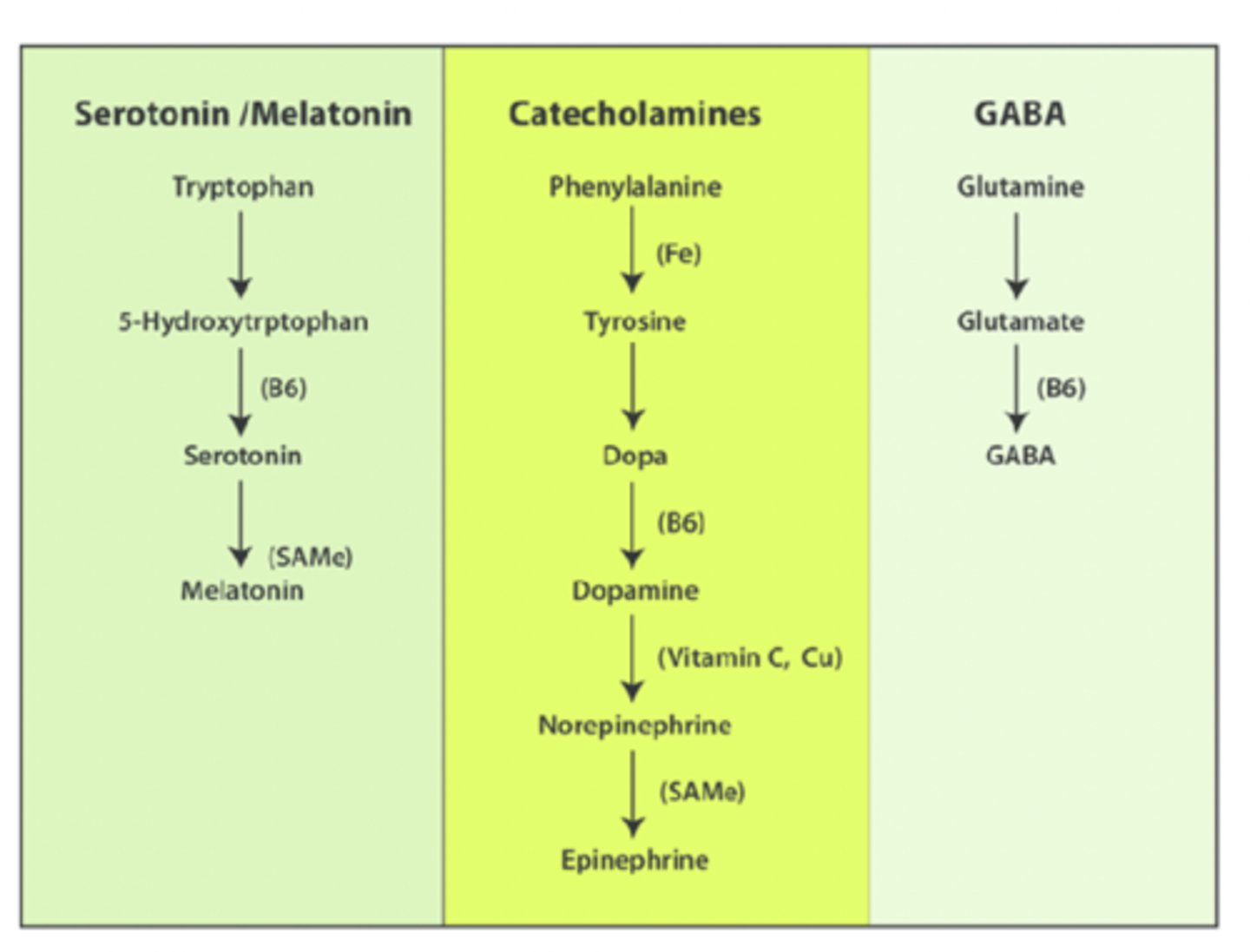
what are synthesized and packed in nerve cell body instead of axon terminal?
neuropeptides
difference between neuromodulators & neurohormones
Neuromodulators:
- may act on pre-synaptic cell to alter amount of neurotransmitter released
- may be co-secreted with neurotransmitter to alter response of post-synaptic cell
Neurohormones
- released from neurons into blood
what are two important neuropeptides that we briefly discussed about in class?
- VIP (Vasoactive Intestinal Peptide)
- Substance P